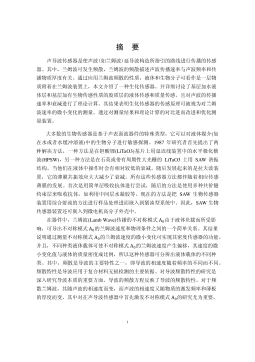乙酰甲胺磷农药的纳米TiO2光催化降解特性研究
摘要本研究以乙酰甲胺磷为底物,首先对磷钼蓝分光光度法测定有机磷农药残留量这种方法进行了改进。在此基础上,对降解过程中的内外界影响因素进行了探讨,并通过响应曲面试验及反应动力学研究,给出了总体的最优控制条件。主要研究结果如下:对磷钼蓝分光光度测定法进行了改进。当检测波长为890nm;反应体系为2.0mL钼酸铵溶液(26g/L)、1.0mL抗坏血酸溶液(100g/L)并添加0.4g/LEDTA;45℃水浴条件下显色10min。在此条件下,测定吸光度与质量呈线性关系,PO43-的量在0~160μg范围内符合比耳定律,磷酸盐测定回归方程为Y=0.00453X-0.00229,相关系数(R2)=0.99...
相关推荐
-
10KV电网D-SCADA 系统信息采集与故障诊断研究与设计VIP免费

 2024-10-14 38
2024-10-14 38 -
方形吸顶散流器平送风等温射流特性研究VIP免费

 2025-01-09 11
2025-01-09 11 -
关于充液声导波传感器中频散兰姆波的研究VIP免费

 2025-01-09 15
2025-01-09 15 -
结合梁斜拉桥施工过程中考虑剪力滞影响的分析方法VIP免费

 2025-01-09 23
2025-01-09 23 -
空调房间热舒适性的数值模拟与实验研究VIP免费

 2025-01-09 8
2025-01-09 8 -
汽车前轮线控转向系统研究VIP免费

 2025-01-09 11
2025-01-09 11 -
输入分配型混合动力车辆动力系统控制策略研究VIP免费

 2025-01-09 8
2025-01-09 8 -
双馈风力发电系统的柔性并网控制研VIP免费

 2025-01-09 21
2025-01-09 21 -
污水处理厂污泥好氧堆肥发酵技术的试验研究VIP免费

 2025-01-09 10
2025-01-09 10 -
应用风室试验装置的风机性能VIP免费

 2025-01-09 12
2025-01-09 12
相关内容
-

汽车前轮线控转向系统研究
分类:高等教育资料
时间:2025-01-09
标签:无
格式:PDF
价格:15 积分
-

输入分配型混合动力车辆动力系统控制策略研究
分类:高等教育资料
时间:2025-01-09
标签:无
格式:PDF
价格:15 积分
-

双馈风力发电系统的柔性并网控制研
分类:高等教育资料
时间:2025-01-09
标签:无
格式:PDF
价格:15 积分
-

污水处理厂污泥好氧堆肥发酵技术的试验研究
分类:高等教育资料
时间:2025-01-09
标签:无
格式:PDF
价格:15 积分
-

应用风室试验装置的风机性能
分类:高等教育资料
时间:2025-01-09
标签:无
格式:PDF
价格:15 积分






